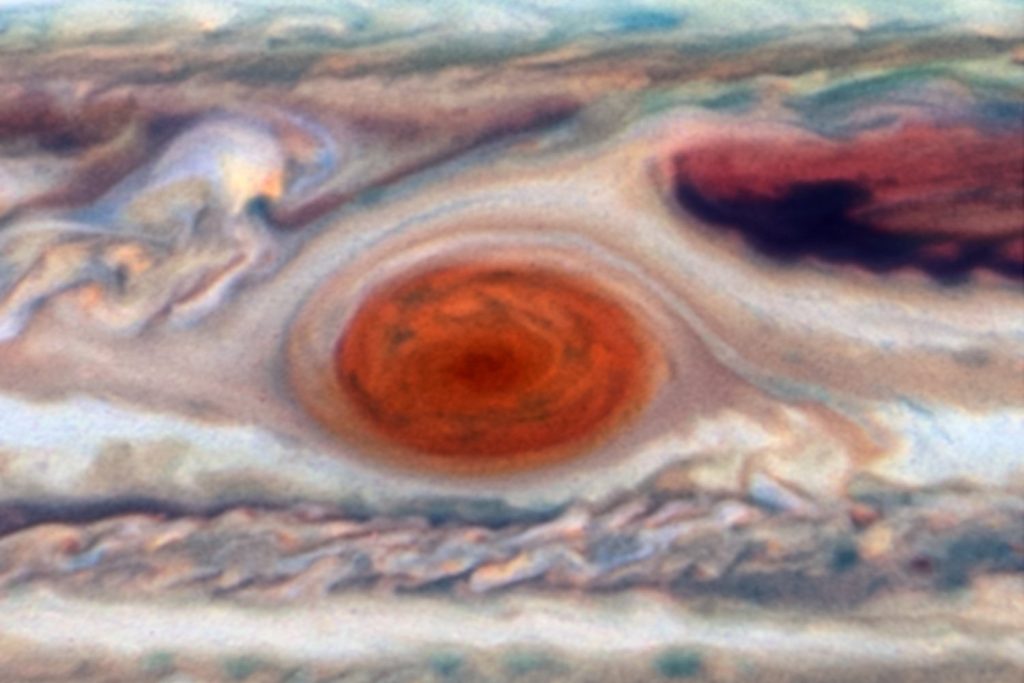
Jupiter’s Great Red Spot Is Shapeshifting in Ways ‘Never Identified Before’ (Image Credit: Gizmodo-com)
A massive storm has been raging on Jupiter for centuries, and, for the most part, has appeared very serious. A new series of detailed images, however, revealed that the famous red cyclone can get a little squiggly, bulging into different shapes and sizes over a short period of time.
Astronomers used the Hubble space telescope to look at Jupiter’s Great Red Spot (GRS) from December 2023 to March 2024, and they observed the massive storm changing dimensions over the 90-day period. The reason behind this unexpected shapeshifting is unknown, but it revealed that the famous red storm is not as stable as it seemed. The results of the Hubble observations are detailed in a study published Wednesday in The Planetary Science Journal.

Using Hubble’s observations, the team of astronomers behind the new study measured the Great Red Spot’s size, shape, brightness, color, and vorticity over one full oscillation cycle. The combined images act like a time-lapse of the storm’s changing behavior, revealing its famous red eye varying in size, while its core gets brighter when the Great Red Spot is at its largest during the 90-day cycle.
“This is really the first time we’ve had the proper imaging cadence of the GRS. With Hubble’s high resolution we can say that the GRS is definitively squeezing in and out at the same time as it moves faster and slower,” Amy Simon, a researcher at NASA’s Goddard Space Flight Center in Greenbelt, Maryland, lead author of the new study, said in a statement. “While we knew its motion varies slightly in its longitude, we didn’t expect to see the size oscillate as well. As far as we know, it’s not been identified before.”
The Red Spot is the largest known storm in the solar system, taking up one-sixth the diameter of Jupiter itself. It’s so big that it could swallow Earth into its swirling oval of clouds, measuring at nearly twice the size of our planet. When it was first observed, the Great Red Spot extended over 24,200 miles (39,000 kilometers) but it has been shrinking ever since. Today, the storm stretches as wide as 10,159 miles (16,350 kilometers) and has become more rounded in shape.
Hubble has been observing the Great Red Spot shrinking over the past 10 years, and the team behind the study predicts that it will become more stable as it gets smaller in size. “Right now it’s over-filling its latitude band relative to the wind field. Once it shrinks inside that band the winds will really be holding it in place,” Simon said.
Unlike hurricanes on Earth, the Great Red Spot rotates counterclockwise, which suggests that it’s a high-pressure system. However, understanding the mechanics behind Jupiter’s ancient storm can help scientists better understand hurricanes on Earth within a broader cosmic context, as well as the meteorology on other planets.
The Great Red Spot has been known to change its size, color, and shape, but the new observations reveal a lot of changes from day to day. “As it accelerates and decelerates, the GRS is pushing against the windy jet streams to the north and south of it,” Mike Wong, a researcher at the University of California at Berkeley, and co-author of the study, said in a statement. “It’s similar to a sandwich where the slices of bread are forced to bulge out when there’s too much filling in the middle.”
Although the iconic storm was first spotted in 1664, scientists are still surprised by its mysterious, odd behavior that, so far, they haven’t been able to explain. There’s still more to learn about Jupiter’s erratic storm, and luckily Hubble will stay on the lookout.





